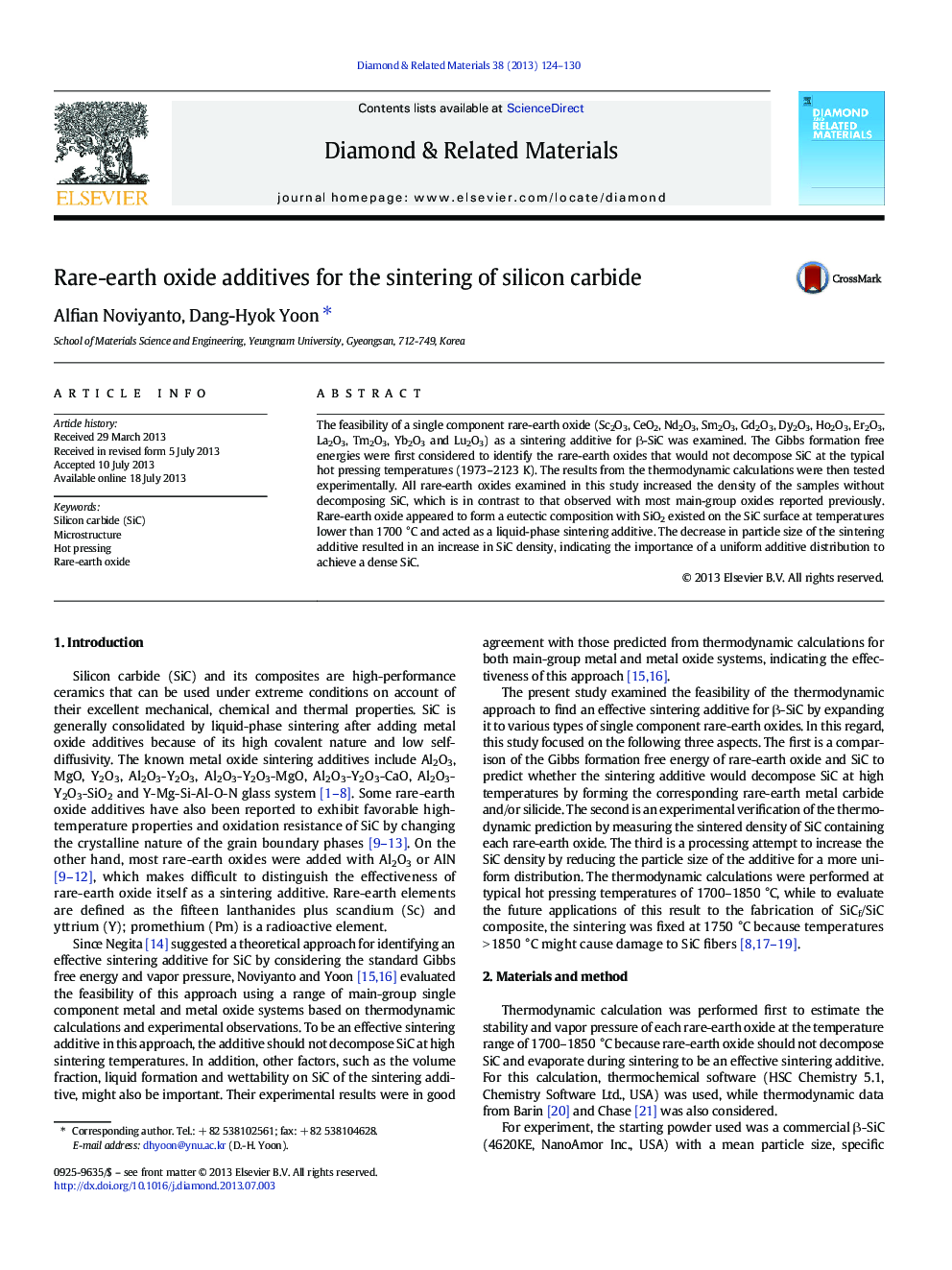| Article ID | Journal | Published Year | Pages | File Type |
|---|---|---|---|---|
| 7111576 | Diamond and Related Materials | 2013 | 7 Pages |
Abstract
The feasibility of a single component rare-earth oxide (Sc2O3, CeO2, Nd2O3, Sm2O3, Gd2O3, Dy2O3, Ho2O3, Er2O3, La2O3, Tm2O3, Yb2O3 and Lu2O3) as a sintering additive for β-SiC was examined. The Gibbs formation free energies were first considered to identify the rare-earth oxides that would not decompose SiC at the typical hot pressing temperatures (1973-2123 K). The results from the thermodynamic calculations were then tested experimentally. All rare-earth oxides examined in this study increased the density of the samples without decomposing SiC, which is in contrast to that observed with most main-group oxides reported previously. Rare-earth oxide appeared to form a eutectic composition with SiO2 existed on the SiC surface at temperatures lower than 1700 °C and acted as a liquid-phase sintering additive. The decrease in particle size of the sintering additive resulted in an increase in SiC density, indicating the importance of a uniform additive distribution to achieve a dense SiC.
Related Topics
Physical Sciences and Engineering
Engineering
Electrical and Electronic Engineering
Authors
Alfian Noviyanto, Dang-Hyok Yoon,
